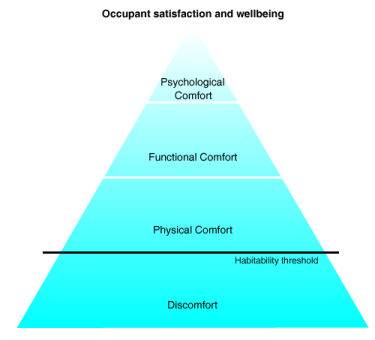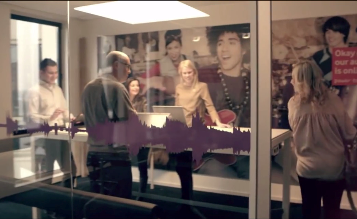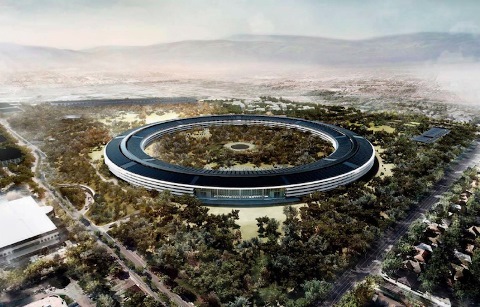
|
February 2015 |
[an error occurred while processing this directive] |
|
Building Smarter
Workplaces for the Digital Age "We found that
rectangles or squares or long buildings or buildings
with more than four stories would inhibit collaboration."
|
Vishal
Mallick PhD & Raja Bose MSc, MBA, Performance Buildings AG Edited & Published by Memoori |
| Articles |
| Interviews |
| Releases |
| New Products |
| Reviews |
| [an error occurred while processing this directive] |
| Editorial |
| Events |
| Sponsors |
| Site Search |
| Newsletters |
| [an error occurred while processing this directive] |
| Archives |
| Past Issues |
| Home |
| Editors |
| eDucation |
| [an error occurred while processing this directive] |
| Training |
| Links |
| Software |
| Subscribe |
| [an error occurred while processing this directive] |
Recently
there has been considerable activity in workplace design, with
research and experimentation undertaken by academics, consultants,
architects and suppliers of office equipment.
All these stakeholders are trying to understand how we can design and
build smarter workplaces for the Digital Age.
A generic framework for workplace comfort (ie: needs) has been proposed
by Dr Jacqueline Vischer at the University of Montreal (The Concept of
Workplace Performance and Its Value to Managers, California Management
Review, Vol 49, No. 2, Winter 2006). Her framework echoes Maslow’s
Hierarchy of Needs.

Above the Threshold of Habitability (which establishes minimum requirements for enabling people to work) she defines three levels of comfort.
Physical
Comfort
Determined by standards on safety, hygiene, temperature, etc and
influenced by the designer. In most modern buildings it is guaranteed
and is increasingly aided by buildings automation technology, such as
security and climate control.
Functional Comfort
This concerns the effectiveness of workspaces in helping people perform
their work, and depends on lighting, furniture ergonomics, room design,
etc.

In our view, Functional Comfort must
include the actual Functional Use
of space, for example, lobby and reception area, Board Room, meeting
room, workshop and brainstorm room, areas for collision with
colleagues.
Thus, a reception area need not just be
for check-in and check-out of
visitors, since these can be automated, but could be transformed into a
hospitality center, where the receptionist’s job changes from handing
out, collecting and logging badges in a register to a concierge,
serving visitors personally.
Psychological Comfort
Psychological Comfort is about linking “psychosocial aspects with
environmental design and management of the workspace through
territoriality, privacy, and control.”
Psychological Comfort, where we move from the influence of things to
the influence of people in the workplace, is by definition a dynamic
and messy state, subject to societal changes (social media, Gen X and Y
employees, and beyond), technology changes (connectivity and mobility),
workstyle changes (anywhere, any time, on the move), and workplace
changes (flexibility, office on demand, co-working hubs).
For example, Vischer claims that studies
have shown people consider
negatively moving out of private offices into open workstations,
because of reductions in privacy, acoustic ambience and
confidentiality, and these have clear implications for workspace
design. Yet, private offices inhibit chance encounters and informal
exchanges. Many workspaces are deliberately being designed for people
collision.
“If
a building doesn’t encourage [collaboration], you’ll lose a lot of
innovation and the magic that’s sparked by serendipity. So we designed
the building to make people get out of their offices and mingle in the
central atrium with people they might not otherwise see.” Steve Jobs
The design of the new Apple HQ, started with an understanding of how
people should work:

Figure 4 Apple HQ
This need for adaptability of workplace
design to meet changing needs
is made clear in Cisco’s Report, Office Design Case
Study: How Cisco
designed the collaborative connected workplace environment:
"The work environment we've been
building is not necessarily what
employees need.” Christine Ross, manager in the Workplace
Effectiveness
Team for Cisco Workplace Resources (WPR).
To date, most initiatives in workplace
design have concentrated on
physical implementation -
Physical and Functional Comfort - through
ergonomic furniture design, room layouts, creation of flexible spaces,
architecture, interior design, and building automation.
[an error occurred while processing this directive]
In future articles, we will discuss the
role of technology in
understanding and serving workplace needs. Based on hard, occupancy
statistics and constructing evidence-based Use Cases, technology can
create solutions that free up people to do their work wherever they are
and not waste time on mundane processes like inviting and managing
visitors, booking meeting rooms, organizing brainstorms, ordering AV
equipment and catering, and so on. Just like turning receptionists into
value-adding concierges and letting technology take care of security.
This article was authored by Vishal
Mallick PhD & Raja Bose MSc,
MBA from Performance
Buildings AG, whose technology reduces consumption
of resources in buildings and enables new services for users. The
article was edited by and 1st published on Memoori.
[an error occurred while processing this directive]
[Click Banner To Learn More]
[Home Page] [The Automator] [About] [Subscribe ] [Contact Us]